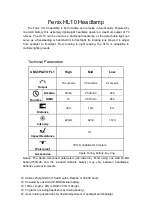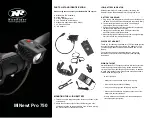
<ind>
= is the character obtained by adding the address number of the "recipient instrument" to 80h (e. g. addr
= 1: <ind> = 81h). With <ind> = 80h the string is taken into account by all instruments.
<state>
= character encoded as in the following table (bit = 1 if TRUE condition)
<net>
= fields composed of 7 ASCII characters with the right value justified; characters can take values be-
tween "0" and "9" (30h and 39h), space (20h) or decimal point "." (2Eh); in case of negative weight the first
character of the <net> field corresponds to "-".
In overweight conditions the field takes on the value: "^^^^^^^^".
In underweight conditions the field assumes the value: "_ _ _ _ _ _ _ _".
In weight reading error conditions the field assumes the value: "O-L".
<tare>
= fields composed of 7 ASCII characters with the right value justified; characters can take values be-
tween "0" and "9" (30h and 39h), space (20h) or decimal point "." (2Eh);
<csum>
= check sum of the string data. It is calculated by executing the exclusive OR (XOR) of all characters
from STX (or from <Ind>) to ETX excluding the latter; the result of the XOR is broken down into 2 characters
considering the 4 upper bits (first character) and the lower 4 bits (second character) separately; the 2 charac-
ters obtained are then ASCII coded; (example: XOR = 5Dh; <csum> = "5Dh" ie 35h and 44h).
Weight reset
The MASTER sends the command with string:
Ind Z EOT
The SLAVE replies to the command with string:
Ind ACK EOT
Execute auto-tare
The MASTER sends the command with string:
Ind A EOT
The SLAVE replies to the command with string:
Ind ACK EOT
Reset tare
The MASTER sends the command with string:
Ind C EOT
The SLAVE replies to the command with string:
Ind ACK EOT
In case of reception of an incorrect string, the SLAVE replies with:
Ind NACK EOT
The MASTER requests the weight with the string:
Ind T EOT
The SLAVE replies with the string:
<Ind> T <net> ETX <csum> EOT
Where:
ETX
(End of Text) = 0x03h
EOT
(End of transmission) = 0x04h
<address>
= 1 ASCII character that identifies the communication address of the instrument; this character is
obtained by adding 0x80h to the address value (e. g. address 1: 0x80h + 0x01h = 0x81h).
T
= Character “T” value ASCII 0x54h.
Pagina –
page
–
Seite
33
Содержание VIS100HE
Страница 1: ...Manuale Manual Handbuch...
Страница 53: ...Appunti notes Notizen Pagina page Seite 51...
Страница 54: ...Appunti notes Notizen Pagina page Seite 52...
Страница 56: ......



































